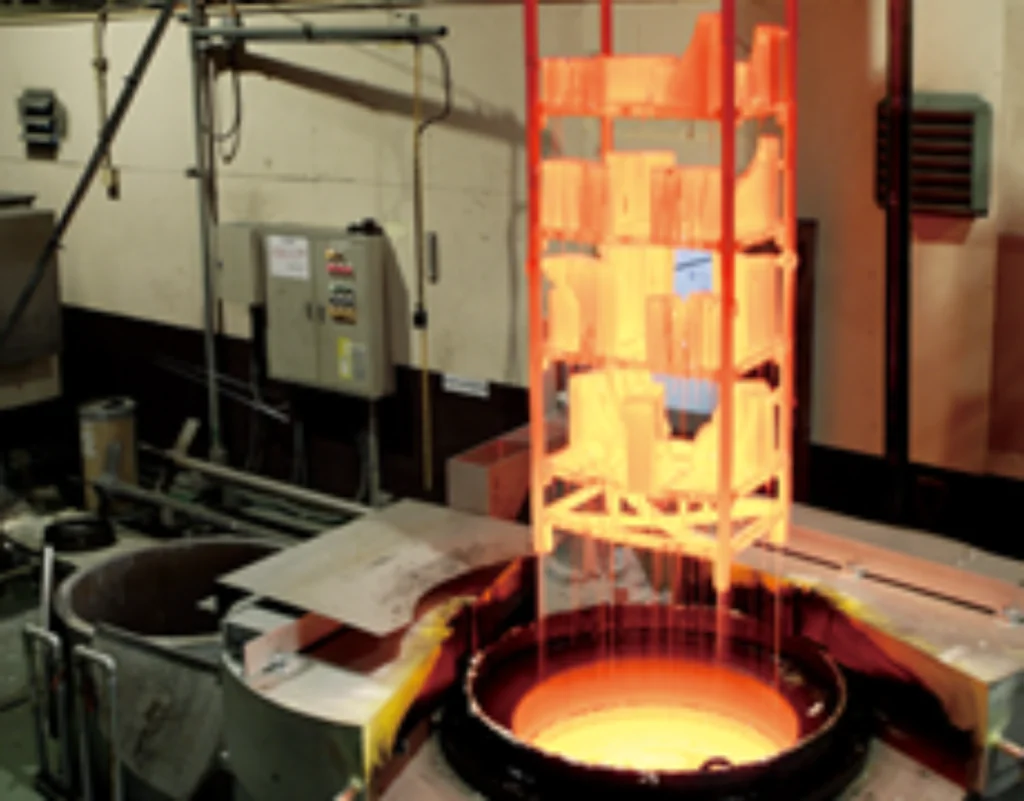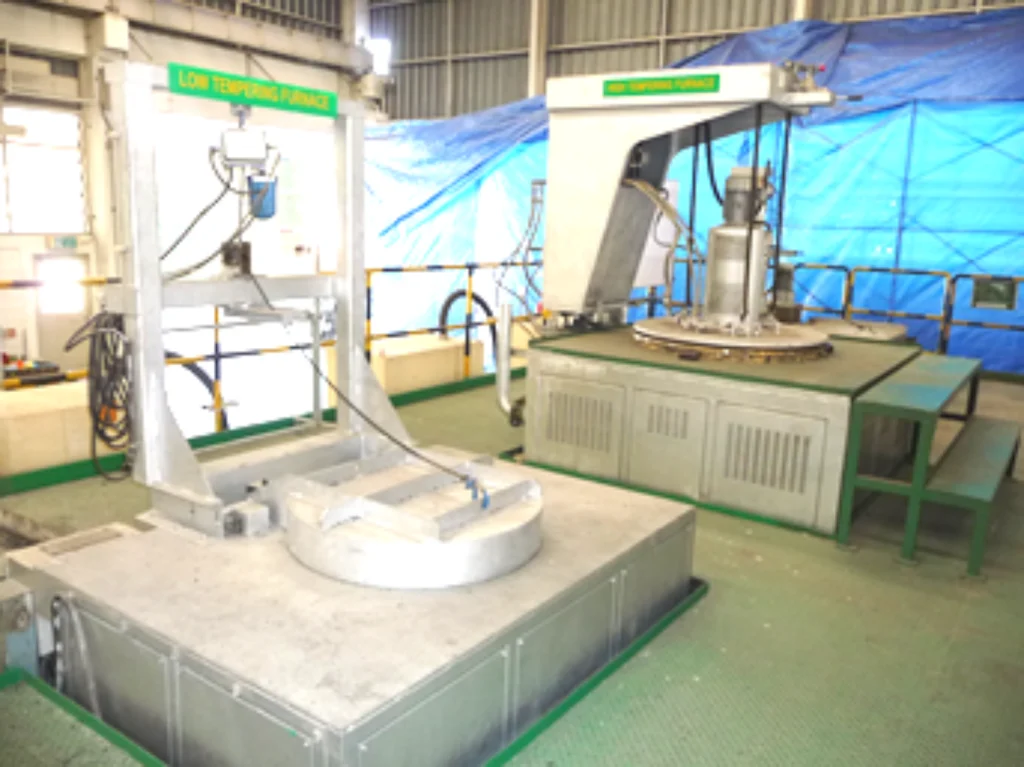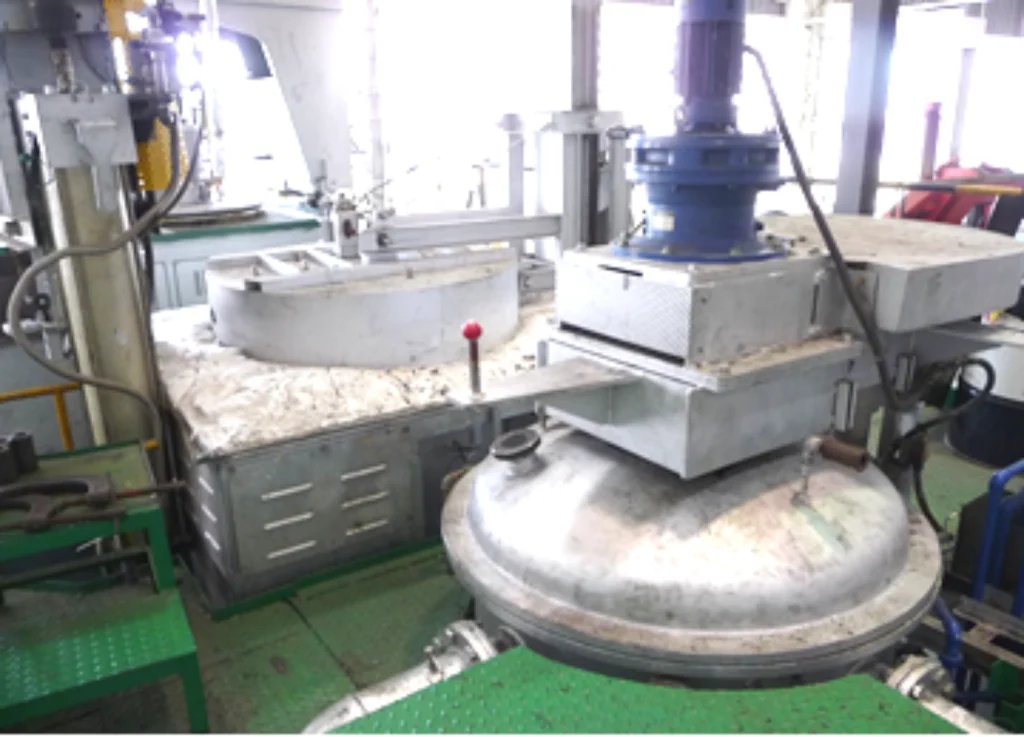Toyota Diffusion Processing (TD): The Advanced Carbide Coating Process
In the world of materials science and surface engineering, achieving exceptional wear resistance and hardness is paramount. Toyota Diffusion Processing (TD Processing), also known as Thermal Diffusion Coating, stands out as a highly effective method for creating extremely hard carbide coatings on steel surfaces. This process, originally developed by Toyota, offers superior performance in demanding applications, extending the lifespan and improving the efficiency of tools, dies, and other critical components. In this comprehensive guide, we’ll explore the principles behind TD Processing, its advantages, applications, and how it compares to other surface treatment methods.
Section 1 What is Toyota Diffusion Processing (TD Processing)?
TD Processing is a thermochemical surface treatment used to form a hard carbide layer on the surface of ferrous materials, primarily steel. This is achieved by immersing the steel component in a molten salt bath containing carbide-forming elements (such as vanadium, niobium, chromium, or titanium) at a high temperature. The diffusion process allows these elements to react with the carbon present in the steel, creating a dense and highly adherent carbide layer. The resultant surface is exceptionally hard, providing excellent resistance to wear, abrasion, galling, and erosion.
Section 2 The Science Behind TD Processing
The core of TD Processing lies in the controlled diffusion of carbide-forming elements into the steel substrate. Here’s a breakdown of the key steps:
2.1 Preparation: The steel component is thoroughly cleaned to remove any surface contaminants that could hinder the diffusion process.
2.2 Molten Salt Bath: The component is immersed in a carefully controlled molten salt bath. The bath typically consists of borax-based salts and a carbide-forming element compound (e.g., ferrovanadium for vanadium carbide coatings).
2.3 High Temperature: The salt bath is maintained at a high temperature, typically between 800°C and 1050°C (1472°F and 1922°F).
2.4 Diffusion and Reaction: At these elevated temperatures, the carbide-forming element diffuses into the surface of the steel. It reacts with the carbon present in the steel to form a dense layer of carbide crystals.
2.5 Cooling: After the desired treatment time (ranging from a few hours to several hours), the component is slowly cooled to prevent cracking or distortion.
2.6 Cleaning: The component is cleaned to remove any residual salt from the surface.
Table: Common Carbide Coatings Produced by TD Processing
| Carbide Coating | Carbide-Forming Element | Properties | Applications |
| Vanadium Carbide (VC) | Vanadium | Extremely Hard, Excellent Wear Resistance | Forming dies, extrusion dies, cutting tools, wear plates, hot forging tools. |
| Niobium Carbide (NbC) | Niobium | High Hardness, Good High-Temperature Stability | Hot forging dies, high-speed steel cutting tools, wear parts in high-temperature environments. |
| Chromium Carbide (CrC) | Chromium | Good Corrosion Resistance, Moderate Hardness | Plastic injection molds, components exposed to corrosive environments, tools used with abrasive plastics. |
| Titanium Carbide (TiC) | Titanium | High Hardness, Good Wear Resistance | Cutting tools for machining abrasive materials, wear-resistant coatings for aerospace components. |
Section 3 Advantages of TD Processing
TD Processing offers several significant advantages over other surface treatment methods:
3.1 Exceptional Hardness: The carbide layers produced by TD Processing are among the hardest available, typically ranging from 2800 to 3500 HV (Vickers hardness).
3.2 Superior Wear Resistance: The high hardness and density of the carbide layer provide exceptional resistance to abrasive wear, adhesive wear, and erosion.
3.3 Strong Adhesion: The diffusion process creates a strong metallurgical bond between the carbide layer and the steel substrate, preventing delamination or chipping.
3.4 High Temperature Stability: TD-coated components can maintain their hardness and wear resistance at elevated temperatures.
3.5 Minimal Distortion: TD Processing is performed at relatively low temperatures, minimizing the risk of distortion or cracking.
3.6 Versatility: TD Processing can be applied to a wide range of steel alloys.
Good Compressive Stress: The induced compressive stress enhances fatigue life of the treated parts.
Section 4 Disadvantages of TD Processing
While TD Processing offers numerous benefits, it also has some limitations:
4.1 High Processing Temperatures: The high temperatures required for the process can affect the microstructure of the steel substrate.
4.2 Limited Case Depth: The achievable case depth is typically limited to a few microns to tens of microns.
4.3 Environmental Concerns: The use of molten salts raises environmental concerns regarding disposal and handling.
4.4 Surface Roughness: The surface finish of TD-coated components can be relatively rough, requiring additional finishing operations in some cases.
4.5 Thickness limit: The thickness of the coating is generally limited to 20 µm (micrometers).

Section 5 Applications of TD Processing
TD Processing is widely used in various industries to improve the performance and lifespan of critical components:
5.1 Tool and Die Industry: Forming dies, extrusion dies, forging dies, stamping dies, and cutting tools.
5.2 Automotive Industry: Engine components, transmission parts, and suspension components.
5.3 Aerospace Industry: Landing gear components, turbine blades, and fasteners.
5.4 Plastics Industry: Injection molds, extrusion screws, and dies.
5.5 Mining and Construction: Wear plates, drill bits, and crushing equipment.
Section 6 TD Processing vs. Other Surface Treatment Methods
Let’s compare TD Processing to other common surface treatment methods:
Table: Comparison of TD Processing with Other Surface Treatments
| Feature | TD Processing (Thermal Diffusion Coating) | Carburizing | Nitriding | Hard Chrome Plating | PVD/CVD Coatings |
| Hardening Mechanism | Carbide Formation by Diffusion | Carbon Diffusion | Nitrogen Diffusion | Coating Deposition | Coating Deposition |
| Hardness | Very High (2800-3500 HV) | High | High | Very High | Very High |
| Wear Resistance | Excellent | Good | Good | Excellent | Excellent |
| Adhesion | Excellent (Metallurgical Bond) | Good | Good | Fair | Good |
| Temperature | 800-1050°C | 850-950°C | 480-590°C | Low (Often < 50°C) | 200-500°C |
| Distortion | Minimal | Moderate | Minimal | Minimal | Minimal |
| Case Depth/Thickness | 5-20 µm | 0.5-2.0 mm | 0.025-1.0 mm | 0.002-0.05 mm | 1-5 µm |
| Corrosion Resistance | Fair | Poor | Good | Good | Good |
Section 7 Variations and Enhancements of TD Processing
Several variations and enhancements of TD Processing have been developed to further improve its performance:
7.1 Enhanced Diffusion Carbide Layer (EDCL): A modified TD process that produces a more uniform and refined carbide layer.
7.2 Advanced Carbide Diffusion (ACD): A process that uses a different salt bath composition to create carbide coatings with improved properties.
7.3 Duplex Treatments: Combining TD Processing with other surface treatments (e.g., nitriding) to achieve synergistic effects.

Section 8 The Future of TD Processing
TD Processing continues to be a valuable surface treatment for demanding applications. Ongoing research and development efforts are focused on:
8.1 Reducing Processing Temperatures: Developing new salt bath chemistries that allow for lower processing temperatures.
8.2 Improving Surface Finish: Developing methods to produce smoother TD-coated surfaces without the need for additional finishing operations.
8.3 Expanding Material Applications: Investigating the use of TD Processing on non-ferrous materials.
8.4 Environmentally Friendly Alternatives: Developing more environmentally friendly salt bath compositions and processes.
Section 9 Why Choose Welleshaft for Your TD Processing Needs?
When it comes to advanced carbide coating and TD Processing, partnering with a reputable and experienced provider is essential. Welleshaft is a trusted global supplier and contract manufacturer, offering comprehensive TD Processing services tailored to your specific requirements.
Why Welleshaft?
9.1 Expertise and Experience: Welleshaft possesses extensive knowledge and experience in TD Processing, ensuring high-quality and reliable results.
9.2 State-of-the-Art Facilities: Welleshaft utilizes advanced TD Processing equipment and technologies to meet diverse needs.
9.3 Customized Solutions: Welleshaft works closely with clients to understand their unique application requirements and develop customized TD Processing solutions.
9.4 Quality Assurance: Welleshaft adheres to stringent quality control standards throughout the TD Processing procedure.
9.5 Global Reach: As a global supplier and contract manufacturer, Welleshaft can serve clients worldwide.
Conclusion
Toyota Diffusion Processing (TD Processing) is a proven and effective method for creating extremely hard and wear-resistant carbide coatings on steel surfaces. Its unique combination of high hardness, strong adhesion, and high-temperature stability makes it an ideal solution for demanding applications across various industries. As technology advances, TD Processing will likely remain a critical tool for engineers and manufacturers seeking to improve the performance and durability of their components.Contact Welleshaft today to discuss your TD Processing needs and discover how they can enhance the performance and lifespan of your critical components.

